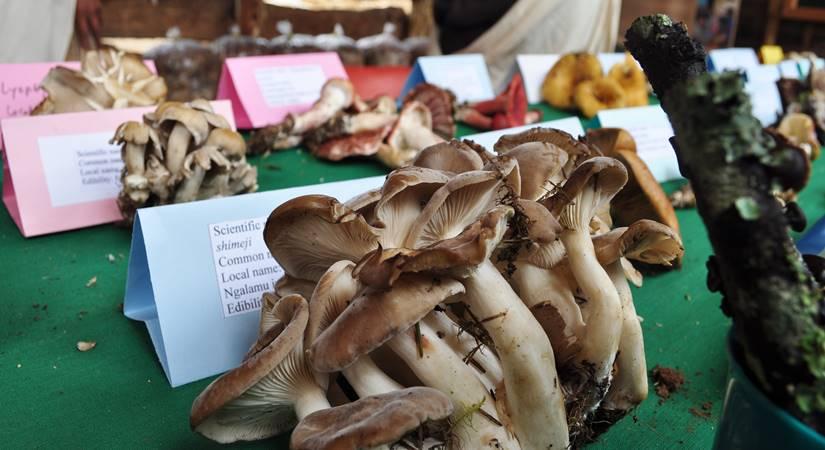The primary cause of hypothyroidism on a global scale is iodine deficiency, as this essential mineral cannot be naturally synthesized by the body. Including dietary sources such as iodized salt, dairy products, seafood, seaweed, and fortified cereals becomes crucial to address this deficiency…reports Asian Lite News
Navigating the complexities of hypothyroidism can be an overwhelming journey, given the rising prevalence of this condition in the Indian population. Thyroid disorders, affecting nearly 42 million Indians, are among the most common endocrine disorders. Hypothyroidism arises when the thyroid gland fails to produce an adequate amount of thyroid hormone, a crucial regulator of the body’s metabolism. This deficiency can significantly impact energy levels, weight, and overall health. While managing hypothyroidism poses its challenges, adopting the right strategies, such as incorporating a tailored diet and engaging in yoga practices, opens the door to a life of vitality and well-being. Whether you’re newly diagnosed or have long been acquainted with hypothyroidism, these holistic approaches offer promising avenues for enhancing your overall health and quality of life.
Optimal Dietary Choices for Hypothyroidism Management
Exploring the ideal foods for hypothyroidism may not yield surprising selections, as there isn’t a single food that miraculously boosts thyroid hormone levels. However, individuals managing hypothyroidism should focus on incorporating specific foods into their diet for enhanced well-being. Listed below are foods rich in essential vitamins and nutrients crucial for supporting individuals with hypothyroidism:
Iodine
The primary cause of hypothyroidism on a global scale is iodine deficiency, as this essential mineral cannot be naturally synthesized by the body. Including dietary sources such as iodized salt, dairy products, seafood, seaweed, and fortified cereals becomes crucial to address this deficiency.
Iodine plays a pivotal role in the body as it is a fundamental component of thyroid hormones. Individuals lacking in thyroid hormones often correlate with iodine deficiency. To meet the recommended daily intake of iodine, which is 150 micrograms (mcg), one needs less than half the amount found in a teaspoon of iodized salt. Ensuring an adequate supply of this essential nutrient is vital for effective hypothyroidism management.
Vitamin D
A prevalent issue among individuals with hypothyroidism is vitamin D deficiency, although the precise mechanism for this correlation remains unknown. Ensuring sufficient vitamin D intake. The body produces vitamin D due to sun exposure. Diet can play a pivotal role in preventing illnesses associated with its deficiency, such as bone loss and malformations.
Include vitamin D-rich foods in your diet like cheese, mushrooms, fortified foods with vitamin –d such as fortified milk, fortified cereals, eggs, fatty fish like wild-caught salmon, and dairy products like Greek yogurt, to boost your vitamin D levels and contribute to the comprehensive management of hypothyroidism.
Tyrosine
Discussing with your healthcare professional is crucial before increasing foods rich in tyrosine or considering supplements, as this amino acid may interact with hypothyroidism medication.
Given its vital role in thyroid hormone synthesis alongside iodine, ensuring adequate tyrosine intake is essential. Foods containing tyrosine, such as seaweed, turkey, eggs, and cottage cheese, can contribute to a well-balanced diet that supports thyroid health. Always consult with your doctor to personalize your dietary approach to managing hypothyroidism effectively.
Selenium
Selenium, with its highest concentration in the thyroid gland, plays a crucial role in supporting enzymes essential for thyroid function. Given its significance, individuals with hypothyroidism may often find themselves deficient in this vital nutrient, impacting not only thyroid health but also the immune system, cognitive function, and fertility.
Incorporating selenium-rich foods into your diet like cereals, meat, and dairy products, fish, seafood, milk, nuts, sea salt, eggs, yeast, bread, mushrooms, garlic, asparagus, kohlrabi, and onion becomes imperative to address potential deficiencies and promote overall well-being, particularly in those managing hypothyroidism.
Antioxidants
In the realm of hypothyroidism management, the role of antioxidants becomes even more significant. These disease-fighting compounds, abundant in fruits and vegetables, actively combat oxidative stress—a heightened inflammatory state linked with hypothyroidism and various chronic diseases.
Elevate your antioxidant intake by incorporating superfoods like berries, nuts, seeds, and dark-green leafy vegetables, including drumstick leaves, spinach, and kale, into your diet. By doing so, you not only contribute to your overall health but also address the specific challenges associated with hypothyroidism and oxidative stress.
Unlocking the Benefits of Yoga for Managing Hypothyroidism
Embracing yoga as a valuable tool in the management of hypothyroidism can yield significant benefits. While it may not provide an immediate cure, the practice is known to foster glandular health and regulate metabolism, thereby serving as a preventive measure against potential complications. Notably, a study demonstrated that an intensive six-month yoga regimen notably reduced the dependence on thyroxine medication for women with hypothyroidism.
It’s important to note that yoga while offering substantial support for thyroid health, is not a standalone cure for thyroid imbalances. Instead, it functions as a complementary therapy, enhancing overall well-being. It should be integrated into your health regimen alongside existing therapies and medications, ensuring a comprehensive and holistic approach to managing hypothyroidism.
Here are a few yoga asanas that can contribute to supporting thyroid health and overall well-being:
Vipareetkaraniasana – Inverted Pose: Vipareetkaraniasana also known as the Legs Up the Wall pose, enhances your well-being, particularly in managing hypothyroidism. This pose facilitates increased blood flow to the thyroid gland, promoting the regulation of thyroid function.
Steps:
Lie down on your back.
Keep the legs together.
While inhaling, raise both legs, buttocks, and the trunk.
The trunk is held at 45ºangle to the ground.
Keep your neck and head in a neutral position for comfort.
Close your eyes, focus on deep and slow breaths, and maintain the position for some time.
To return, lower the legs over the head and touch the toes to the ground.
Keep the hands down and then while exhaling, bring the spine and the legs down.
Ustrasana – Camel Pose: Ustrasana, commonly known as the Camel Pose, proves to be a thyroid-stimulating yoga posture by effectively stretching the neck and enhancing blood circulation in the thyroid gland. Beyond its thyroid-related benefits, this pose contributes to relieving spinal issues, making it a comprehensive and beneficial addition to your yoga routine.
Steps:
Begin in a kneeling position, ensuring your knees are hip-width apart.
Place your hands on the waist.
While inhaling, raise the arms above the head,
While exhaling, bend back and arch your back, gently reaching your hands towards your heels.
Push your abdomen forward, lift the chest, and bend the head back, avoiding any strain.
Hold the pose for 15-20 seconds, gradually increasing the duration as your flexibility improves.
While inhaling, raise the spine, head, and hands straight up.
While exhaling, bring your hands down.
Sarvangasana – Shoulder Stand: Sarvangasana, commonly known as the Shoulder Stand, plays a pivotal role in maintaining the body’s governing system—the endocrine system. This yoga pose exerts beneficial pressure on the thyroid gland, which receives the largest supply of blood in the body. Through this gentle pressure, Sarvangasana enhances blood circulation, facilitating the release of stagnant secretions within the thyroid gland.
Steps:
Lie down straight on your back with arms by your sides. Keep the legs together.
While inhaling, lift your legs, hips, and torso off the ground.
Bend the elbows and support the lower back on the palms.
Straighten your legs upward, keeping them aligned with your torso.
Breathe normally and hold the pose for 30 seconds to a minute, ensuring your neck and head remain in a comfortable position.
Gradually return to the starting position, gently lowering your legs and torso back to the ground.
Setubandhasana – Bridge Pose: Setubandhasana, also known as the Bridge Pose, is an effective yoga posture, particularly beneficial for individuals dealing with hypothyroidism. This pose involves a gentle stretch of the neck and enhances blood circulation within the thyroid gland, making it a valuable addition to a yoga routine tailored for thyroid health.
Steps:
Lie on your back with your knees bent and feet hip-width apart.
Place your arms alongside your body, palms facing down.
While inhaling, lift your hips and spine towards the ceiling, creating a bridge-like position.
Engage your thighs and lift your chest toward your chin, maintaining a comfortable position for your neck.
Place the palms on the waist and support your lower back.
Hold the pose for 30 seconds to a minute, breathing slowly and deeply.
While exhaling, gently lower your hips and back to the ground.
In the face of hypothyroidism’s challenges, adopting a balanced approach becomes key to achieving optimal well-being. Recognising the prevalence of thyroid disorders among millions, individuals can navigate this journey by incorporating the holistic strategies mentioned above. By focusing on overall health and seeking complementary support when needed, individuals managing hypothyroidism can foster vitality and embrace a life marked by balance and improved quality.














